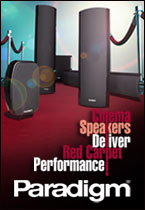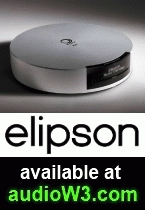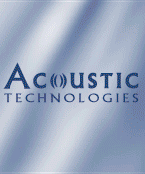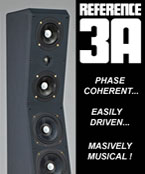The 2014 International Consumer Electronics Show has wrapped up once again and while last year’s show saw the effects of the economic downturn, this year’s show saw a return to grander times both in products showcased and announcements made. So what were some of the hottest trends and products at the 2014 CES?
Last year saw the push by television manufacturers towards Ultra HD (4K) and with the finalization of HDMI 2.0 in late Q3 last year, 2014 will see a raft of new, more economically accessible 4K TVs. Specifically of note is Vizio’s abandonment of 3D technology altogether in its 2014 lineup, instead pushing for cheaper 4K televisions. Vizio’s entry-level P-Series starts with a 50” set with an MSRP of only $999 USD and is slated to ship in the second half of this year. Going up from there, Vizio will offer 5” increments up to its 70” 4K set that is still very accessible at $2,599 USD. They also showed off a ‘Reference’ 120” 4K TV but didn’t provide pricing or availability. Previously a second tier manufacturer, all of Vizio’s 2014 TVs now feature full-array LED backlights with 64-zone local dimming and advanced colour management which should give the likes of Samsung, LG, Sony, Panasonic, and Toshiba a run for their money. Vizio’s smart TVs also support the new HEVC codec for 4K video streaming and come with the latest 802.11ac WiFi standard built-in to handle the increase in bandwidth required. For those that wish to create their own 4K content, Sony announced the FDR-AX100 compact 4K Handycam which carries an MSRP of $1,999 USD, bringing 4K, which was once only available to Hollywood studios, into consumer hands. In addition to this, many new smart phones will soon be capable of 4K video recording; in fact Samsung’s Galaxy Note 3 already offers this. Another noteworthy device that Sony showcased was a 21” deep ultrashort-throw laser-powered projector that sits on the floor and projects a 147” 4K image onto the wall from a mere 7” away (see pic below).
To help address 4K’s chicken/egg content/hardware problem, services such as Netflix and Amazon have announced plans to start producing and streaming native 4K content, allowing consumers to access a wide variety of native 4K content for their new 4K TVs. Partnering to help push 4K, Amazon is teaming up with Warner Bros., 20th Century Fox, Discovery, Lionsgate Entertainment, and Samsung. Cable providers in the US such as Comcast and DirecTV are also set to start broadcasting 4K content. Unfortunately, Canadian providers have yet to announce plans for 4K.
Sadly, while CES often showcases new technologies, the absence of products also signals their demise, in this case: plasma television. With Panasonic announcing that it is ceasing production of its much-loved Viera plasma sets, the final nail is in plasma’s coffin. LG did announce a new plasma HDTV but didn’t bother bringing it to their booth. With LED-backlit LCDs constantly improving, the costs of manufacturing plasma just isn’t justifiable anymore. However, until OLEDs finally come down in price – something that Samsung’s VP of Visual Displays says will take three to four years due to difficulties in manufacturing and low yields – LCDs will be the only display technology in mass production. The push for the next decade will be 4K and OLED. For Panasonic fans, all is not lost as Panasonic showed off a 4K LCD, side-by-side in a darkened room, with their flagship ZT60 (1080p) and last year’s WT600 (4K). Using the extremely dark hilltop scene from Harry Potter: The Deathly Hallows Part II [Chapter 12], Panasonic’s new LED-backlit LCD showed similar stellar black-level performance as the ZT60 with the added bonus of image enhancements that boosted the non-black areas (such as faces) while preserving the dark areas. Panasonic claims they’ve transferred image processing technology from their plasmas which analyzes the black-level content to optimize shadow detail without diminishing the brightness of surrounding highlights.
Back to new technology, with 4K sufficiently pushed on consumers, television manufacturers have moved onto the next trick up their sleeves: curved televisions. While the jury is still out on the benefits and shortcomings of ever-so-slightly curved televisions, having seen Sony’s 65” KDL-65S990A at Bay Bloor Radio in Toronto, I can’t see curved televisions gaining wide scale adoption. While there are benefits to the curve such as the reduction in reflections and a greater sense of immersion thanks to the equidistant viewing angles, the limitations and shortcomings are just far too great: the sweet spot is too small and the distortion is even greater when seated off-centre. The premise behind curved TVs is to emulate massive screens such as IMAX, completely filling a viewer’s vision with imagery. However, to achieve this, IMAX screens are humungous – something that home televisions will never be. As such, unless TV viewers want to all huddle closely together to be in the visual sweet spot and sit at a distance close enough to fill their field of view, very few will be able to enjoy the intention of curved TVs. To show that it’s not all smoke and prototypes, both Samsung (105U9500) and LG (105UC9) have revealed massive 105” curved 4K TVs, with Samsung taking orders for their behemoth $60,000 set for shipment later this year.
Moving from the very large to the very small, 2014 is going to see the release of technology meant to augment everyday lives: wearable technology, home automation, and connected vehicles. Pebble, the e-ink watch that put wearables and crowd-funding on the map after it generated a record 10 million dollars on Kickstarter in May of 2012, released a new steel-clad model at this year’s CES that makes it look more like a proper timepiece and less like Dick Tracy’s wristwatch. Following on their heels are smart watches from Sony, Samsung, Qualcomm, Omate, Casio, Meta Watch, Magellan and Canada’s own Neptune Pine. With the exception of the Pine (which is a fully functional smart phone), all these smart watches connect to your smart phone via Bluetooth to display information, email and social network notifications, allow you to remotely control your smart phone, and take pictures, among other functions. Pebble has announced new apps from the NFL, ESPN, and even Mercedes-Benz.
Wearable displays such as Google Glass are continuing to make in-roads and while mainstream adoption is still years away, enterprises are already developing amazing potential uses in the fields of mechanics, firefighting, medical practitioners, and others where having augmented real-time data and analysis bring huge benefits to the users.
Moving to connected, smart devices, enabled by low-power Bluetooth 4.0 (which allows some to last years on a single CR2032 coin battery) or Texas Instruments’ $10 WiFi chip, these devices will usher in the era of the “Internet of Things.” Such devices have the potential to help make our lives more accessible, automated, and even healthier. CES 2014 showcased everything from smart thermostats such as the Nest and Ecobee, to sensors such as WiMotos, activity/fitness trackers such as the Fitbit, home security devices like Piper, and lighting control via Philips’ Hue or Belkin’s WeMo. I will be talking about all of these devices in a future Home Automation article.
Home automation, in particular, is set to become much more accessible this year. Amazon.com has launched a dedicated section on their website for home automation filled with devices such as Z-Wave home controllers, WiFi-connected thermostats, smart locks, and other devices. Where previously, it cost thousands, or tens of thousands, of dollars to connect and automate one’s home à la The Jetsons, now $50 will get you a Belkin WeMo WiFi-enabled wall switch or socket adapter. Belkin’s free app on your smart phone then allows you to control that connected load from anywhere you’ve got Internet access. Rules and scheduling further allow you to automate it relative to sunset/sunrise or your own schedule. As there are still competing wireless home automation standards, companies such as Revolv and Securifi are releasing controllers with multiple radios (Z-Wave, Insteon, WiFi, etc.), ensuring universal compatibility. Thanks to new $50 switches and $100-$300 controllers (no central controller is even needed for Belkin’s WeMo system) mean that outfitting a home can be done for a few hundred dollars and by incrementally adding home automation devices as you desire. These devices will allow smart homes to detect and respond to changes in the environment (both internally and externally such as weather), know when/where their occupants are and adjust accordingly, and save energy by controlling lights, outlets, and HVAC systems.
Speaking of the connected home, for music, what once was the domain of Sonos, with its multi-room audio systems, is now finally seeing competition from Samsung, LG, Panasonic, Pure, and Korus. Each of these systems is slightly different but in general, allow users to wirelessly stream music from devices such as PCs, smart phones, or network attached storage. Samsung’s “Shape” wireless audio system consists of a hub that you plug into your router and the wireless M5 or M7 speakers, which you can place anywhere within your router’s WiFi range. Samsung is also releasing the “Connect Box” which enables you to stream music to any existing audio system via WiFi. Controlled by smart phone apps, the Shape system allows you to send independent streams to the connected, multi-zone speakers. Sonically, manufacturers are pushing for high-resolution lossless audio now that broadband Internet is more commonplace. Compressed MP3s will slowly go the way of plasma as consumers purchase higher quality playback devices, both portable (earphones, headphones) and home-based, and prices continue to decline for music distribution and streaming systems.
Lastly, stepping out of the home and into the garage, this year’s show saw the announcement of the “Open Auto Alliance” which aims to bring Google’s Android into the dashboard of your next car, with Audi, GM, Honda, and Hyundai already signed up. This alliance isn’t just for Google Maps in cars but will extend to other technologies such as car-to-car communication, traffic avoidance, integration with OnStar, smart roads and traffic lights, and eventually, possibly, Google’s fully self-driving technology. Audi demonstrated automated driving technology that took over in stop-and-go traffic, handling braking, steering, and acceleration but stated that fully autonomous cars are still years away due to high costs, legal issues, and reliability. However, they, along with other auto manufacturers, aim to relieve drivers of strenuous, repetitive tasks that often impact driver awareness and are better handled by automation such as parking and maintaining lane discipline on the highway.
CES 2014 really showcased how technology will make its way into other aspects of everyday life - the industry is calling it the “Internet of Things”. With prices reaching a point that’s finally allowing everything to be connected, new devices will help you achieve your goal of 10,000 daily steps, adjust the temperature at home when you leave the office, advise your car of route changes due to construction, automatically unlock your door when you get home, turn on the lights when you walk in, and play your favourite album throughout the home, seamlessly. The future sounds pretty fascinating!
Click here to discuss this article on the CANADA HiFi Forum
























